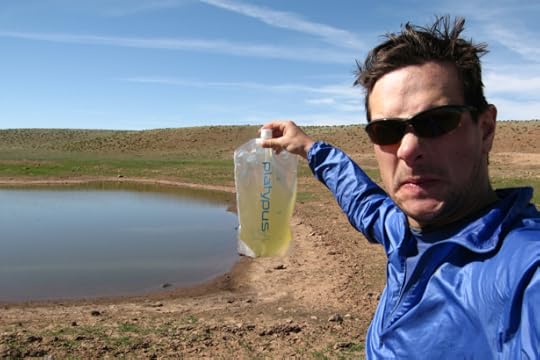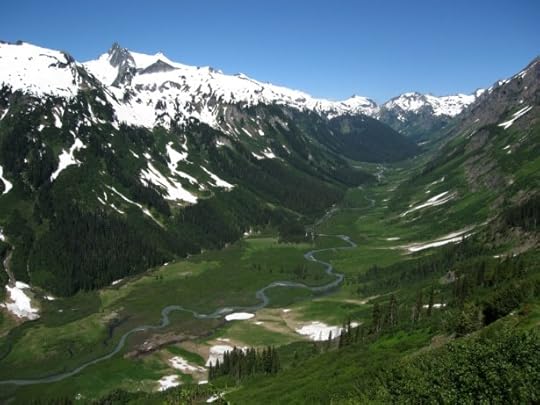Six questions I ask before drinking unpurified backcountry water


There was little doubt if I needed to purify the water from this stock tank on Arizona’s Coconino Plateau.
Earlier this month there was a healthy online debate over the true risk of drinking water from backcountry sources without purifying it first. I appreciate that Ethan Linck brought up the topic and agree that many sources are safe to drink without treatment.
But I agree more with Wes Siler and Christie Wilcox:
It’s difficult to be certain of the contamination risk, and
Waterborne cooties can be uncomfortable (understatement).
So, as a general rule of thumb, just purify it.
Missing from their debate, however, was any instructional knowledge, specifically:
How to effectively purify water sources in the backcountry; and,
How to assess water quality and risk in the field.
I’m generally competent in explaining the how’s of backpacking, so in this two-part series I will try to fill this gap.
If you’ve read The Ultimate Hiker’s Gear Guide, some of this text may sound familiar — it’s from the chapter on Water, which also includes discussion of contaminants and water storage. (A clause in my contract allows me to share short sections of the book.) If you haven’t read the Gear Guide, you should consider it: it’s filled with trail-tested advice, and almost certain to save you time and money.
They say to practice what you preach, but I’ll be honest: While I recommend that you purify backcountry water sources, I generally do not.
But your mileage may vary. Normally I hike off-trail and in low-use corners of the Colorado Rockies and High Sierra — at the headwaters of the Colorado and San Joaquin Rivers — where the water quality is top-shelf. I minimize the risk even further by being very selective about the exact sources from which I drink. In the less regular occasion that I’m backpacking in water-challenged environments like southern Utah or in high-use areas like the Appalachians, the rules of the game change.
In this post I will explain how I assess the quality and risk of a backcountry water source. But read it with a grain of salt: I have no academic training in this subject matter, and my approach is based entirely on personal experience, common sense, and a layman’s understanding of contaminants. So far, it’s worked out pretty well for me.
Before drinking unpurified backcountry water, I consider multiple factors. My ultimate decision is not based on a scoring system (e.g. “Three strikes and you’re out.”), but rather a holistic assessment of its quality and risk. If I deem the risk acceptably low, I’ll go for it; if the risk is too high, I’ll bypass the source or purify it first.
1. What is the distance to the source?
Water quality will typically be best at its source, like where it gurgles out of the ground or drips from a snowfield. Here, it is least likely to carry harmful pathogens like giardia or E. coli, or pollutants like heavy metals or pesticides. When it’s reasonable, I will hike uphill to the highest possible collection point — the top pool or pour-over, or at least beyond the “convenient” spot that everyone else is using.

Notice the streams flowing from the base of these talus fields in Colorado’s Indian Peaks Wilderness. That water is low-risk, because it’s so close to the source.
2. How much poop is upstream?
Most pathogens are transmitted by the fecal-to-oral route, i.e. you ingest water that has been contaminated by the feces of an infected carrier. So if I suspect herds of elk, families of beavers, grazing livestock, or hordes of other hikers upstream of my water source, that’s a reason for concern.

Look closely: mountain maggots (i.e. sheep) on Snow Mesa, along the Colorado Trail
3. What’s the volume?
In this context, the solution to pollution really is dilution — a water source with a low concentration of contaminants poses low risk. For example, in 2000, San Francisco’s primary water source — the Hetch Hetchy Reservoir, which is fed by the Tuolumne River in northern Yosemite — regularly tests positive for giardia. But the levels are so low that, on average, a person would have to drink eight liters of water just to ingest one cyst, a small fraction of the the minimum needed for infection.

The Napeequa River, in Washington’s Glacier Peak Wilderness. Miles from its source, it may have been carrying contaminants, but they would have been diluted by the spring snowmelt.
4. Is it flowing or stagnant?
You would think that a flowing water source would be better than a stagnant one: the flowing source is constantly flushed, whereas a stagnant source could be a one-way collection site for contaminants.
However, flowing sources are not necessarily better: they can carry upstream contaminants directly into my water bottle. I do not shy away from stagnant sources like lakes and potholes, but with one caveat: I try to take water from the top few inches, which get blasted with UV light, a proven purification method.

A large pothole in southern Utah
5. Is it crystal clear?
Turbid water is a bad sign. Microbes tend to burrow into sediment and other floaties, and the effectiveness of some purification methods (notably, chemicals and UV light) are compromised.

Silt-filled water that I let sit overnight. Chemical and UV treatments are less effective in turbid water.
6. What does it look, smell, and taste like?
I use my senses. If I see nasty-looking algae, I purify it. If I smell cow shit, I purify it. If I taste heavy metals, I filter it, or bypass it if I’m not carrying a filter that extracts heavy metals. This is just common sense.

A spring in Big Bend National Park. We were at the source, but the algae did not give me great confidence in its quality.
Questions drinking unpurified water, or am I missing an important factor? Leave a comment.
The post Six questions I ask before drinking unpurified backcountry water appeared first on Andrew Skurka.



